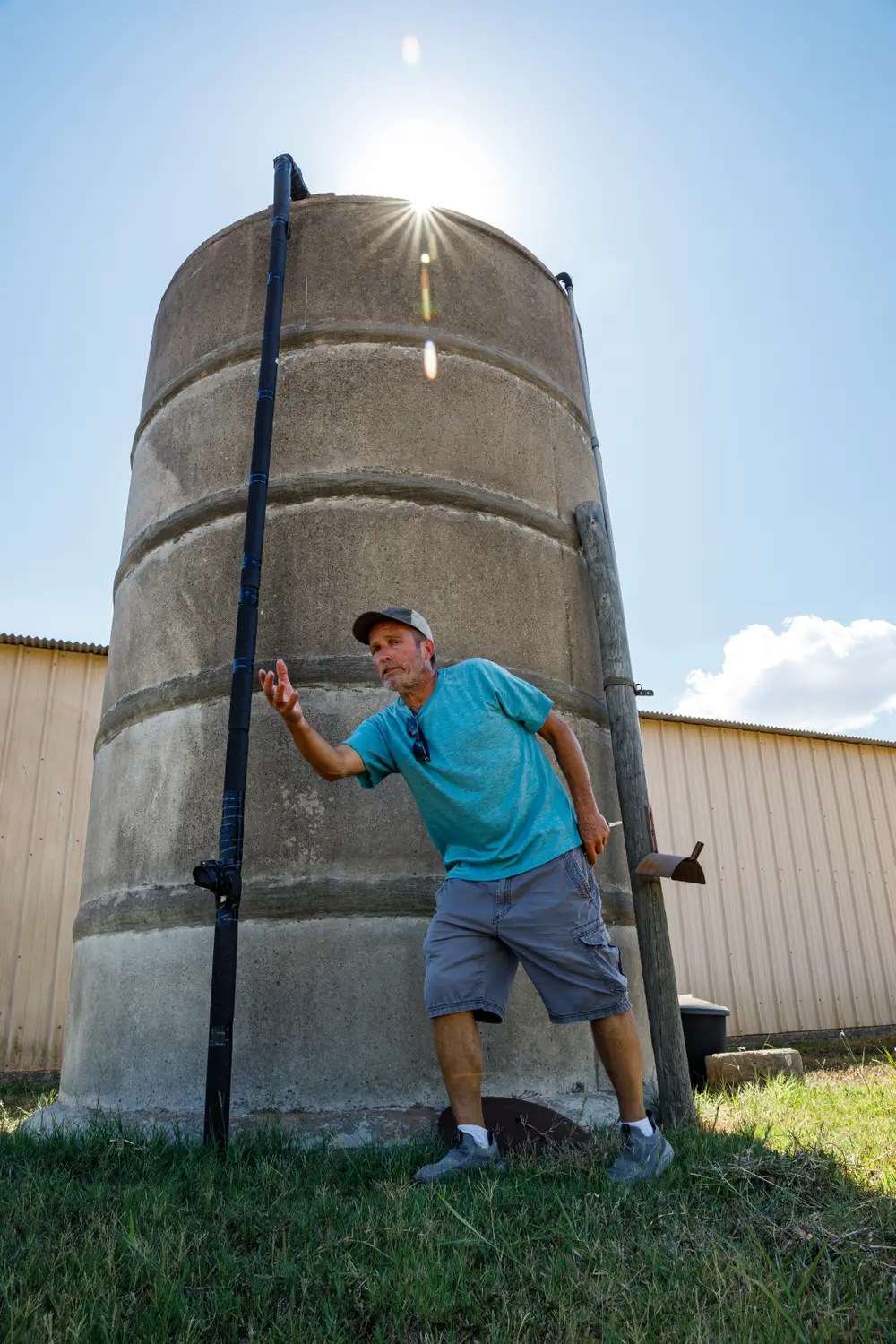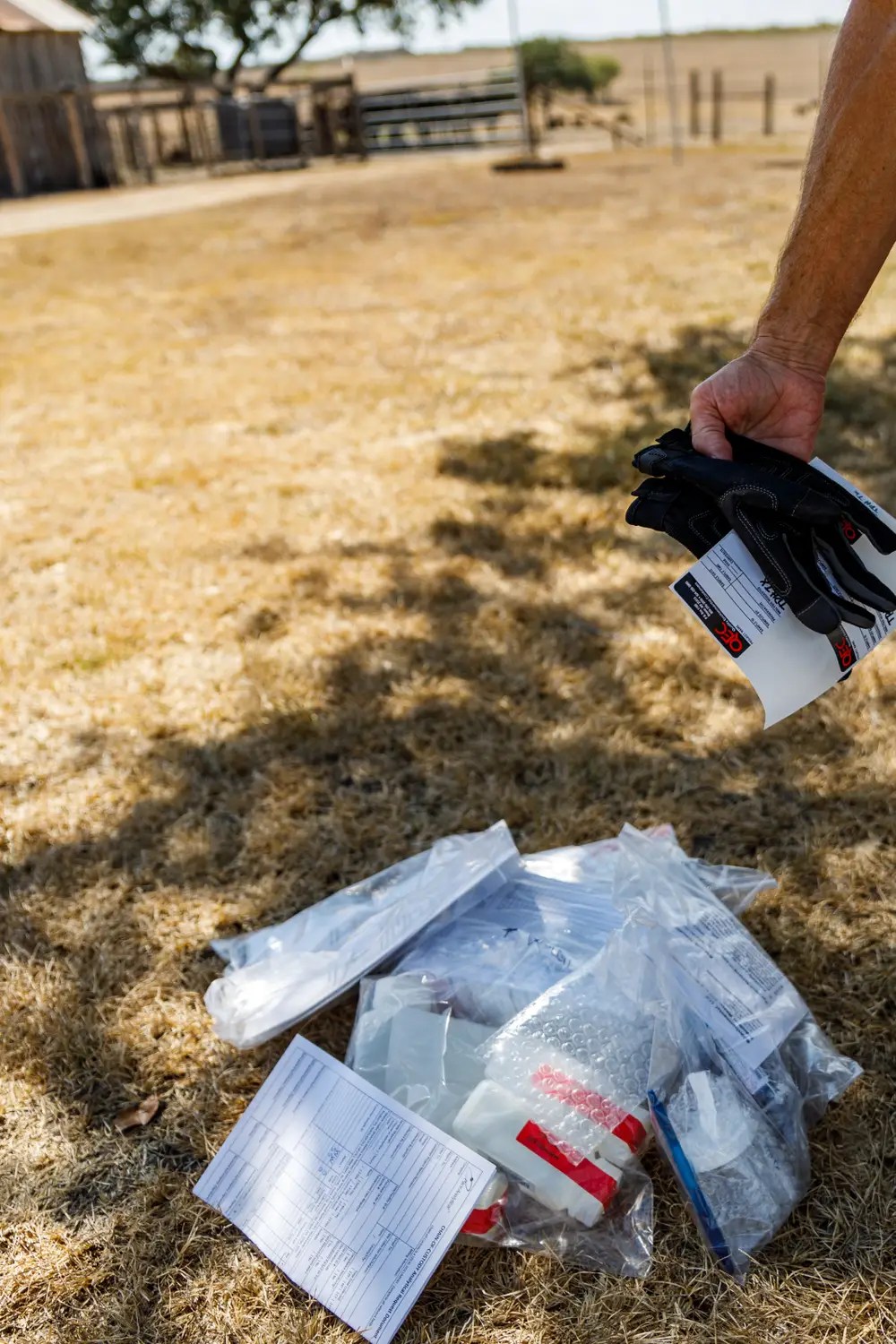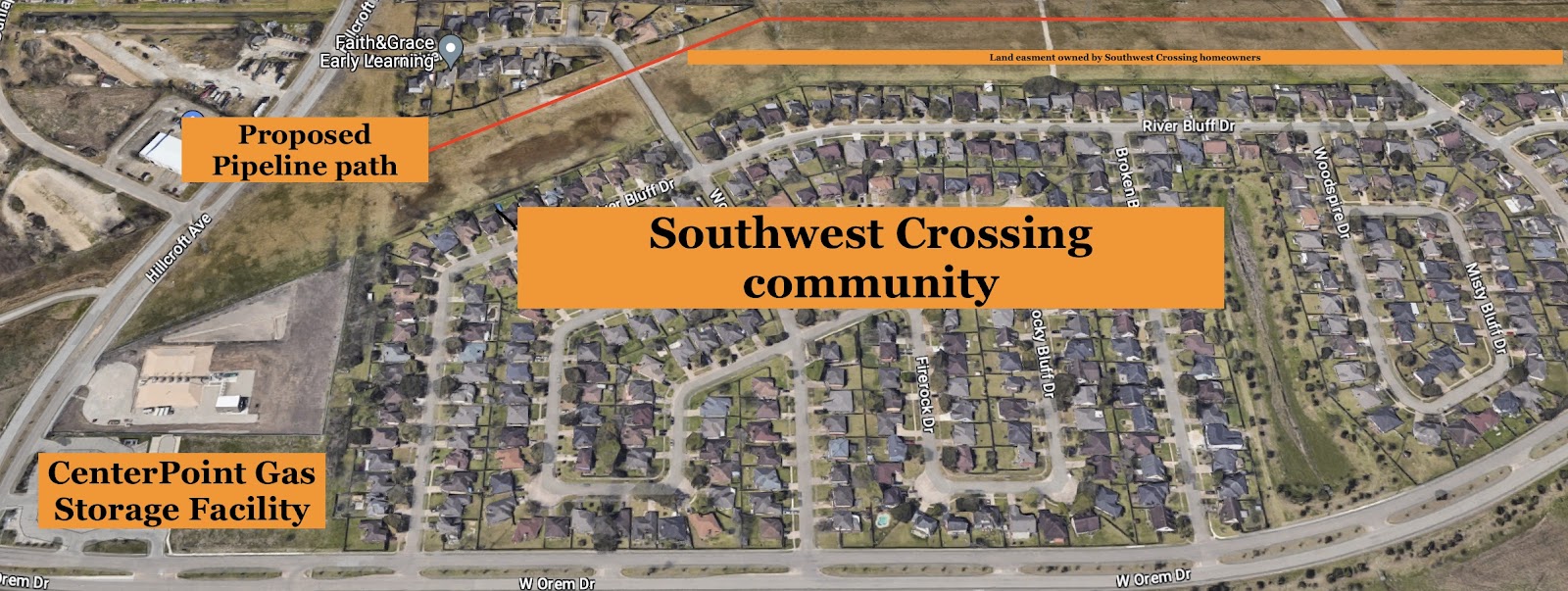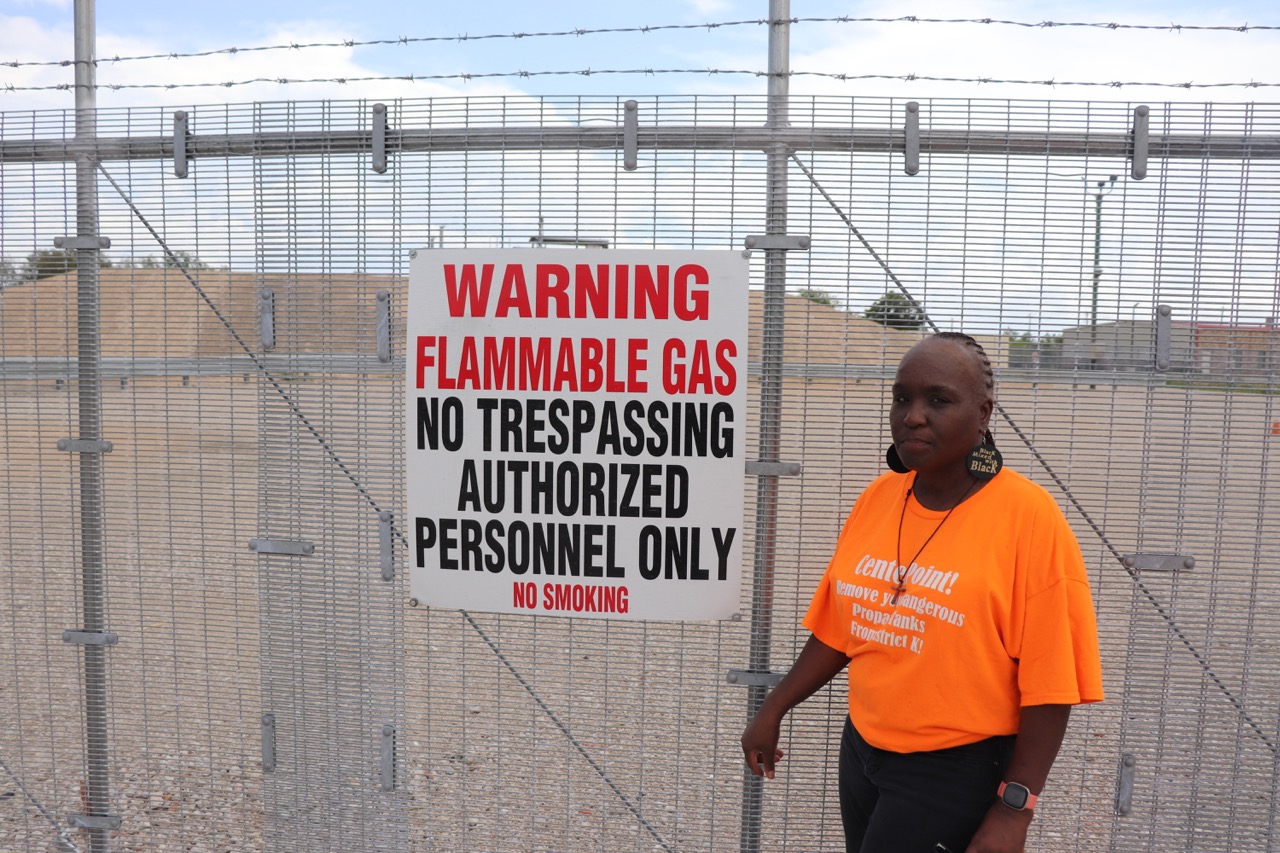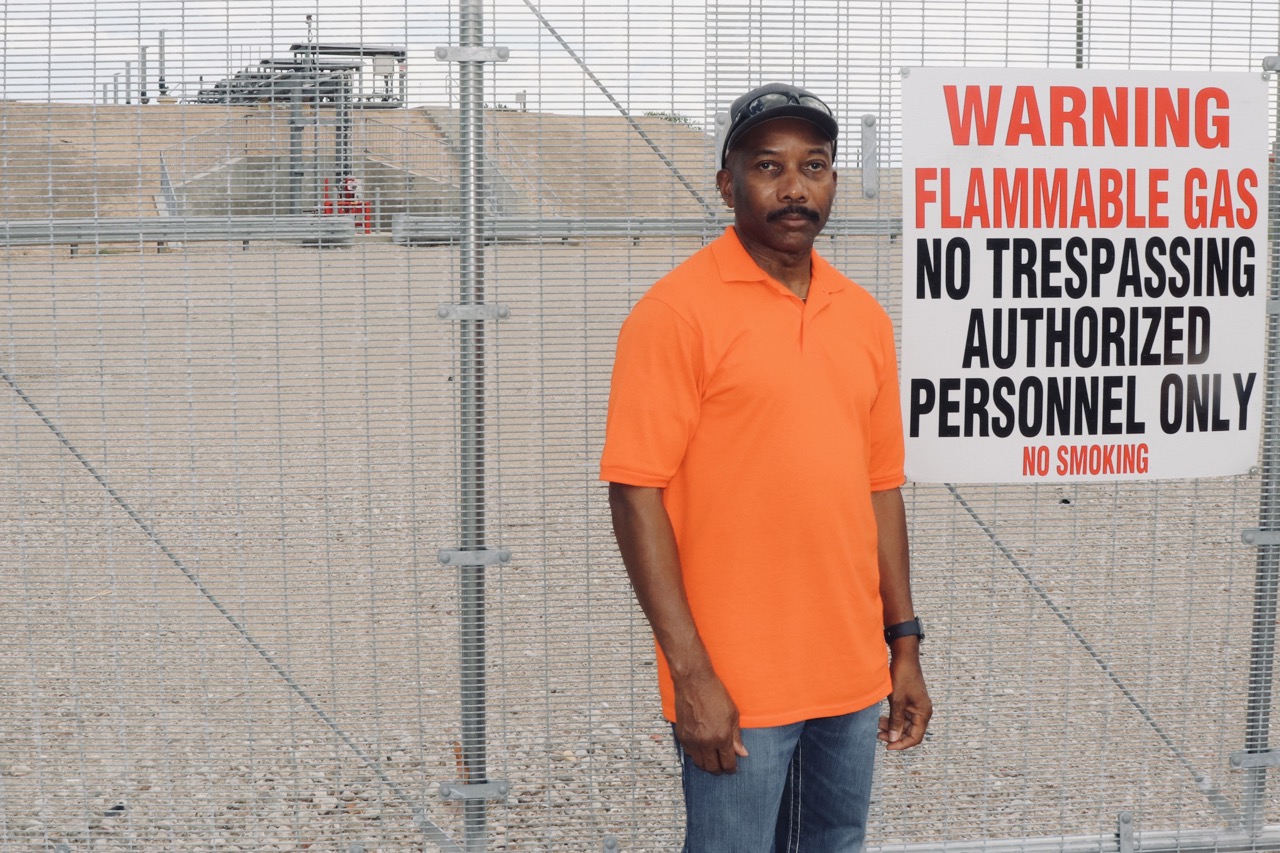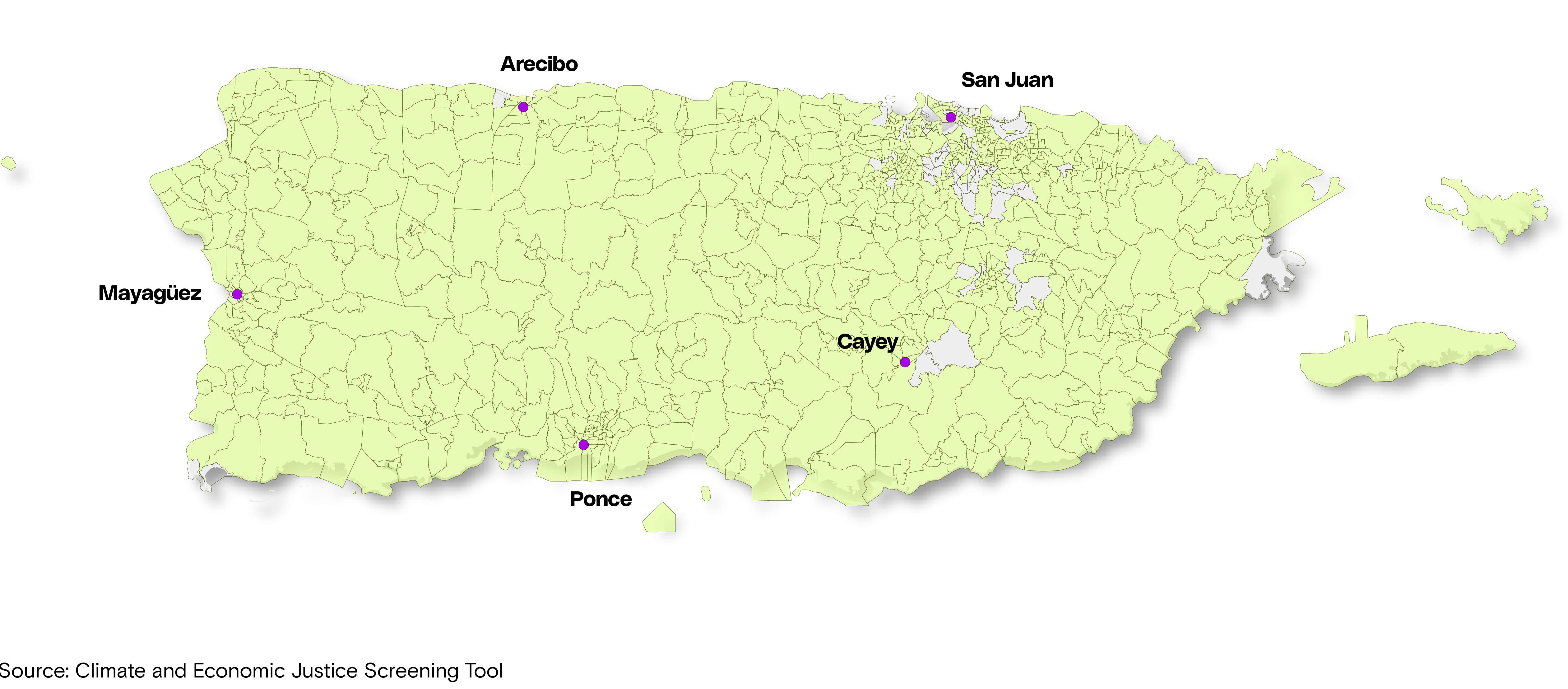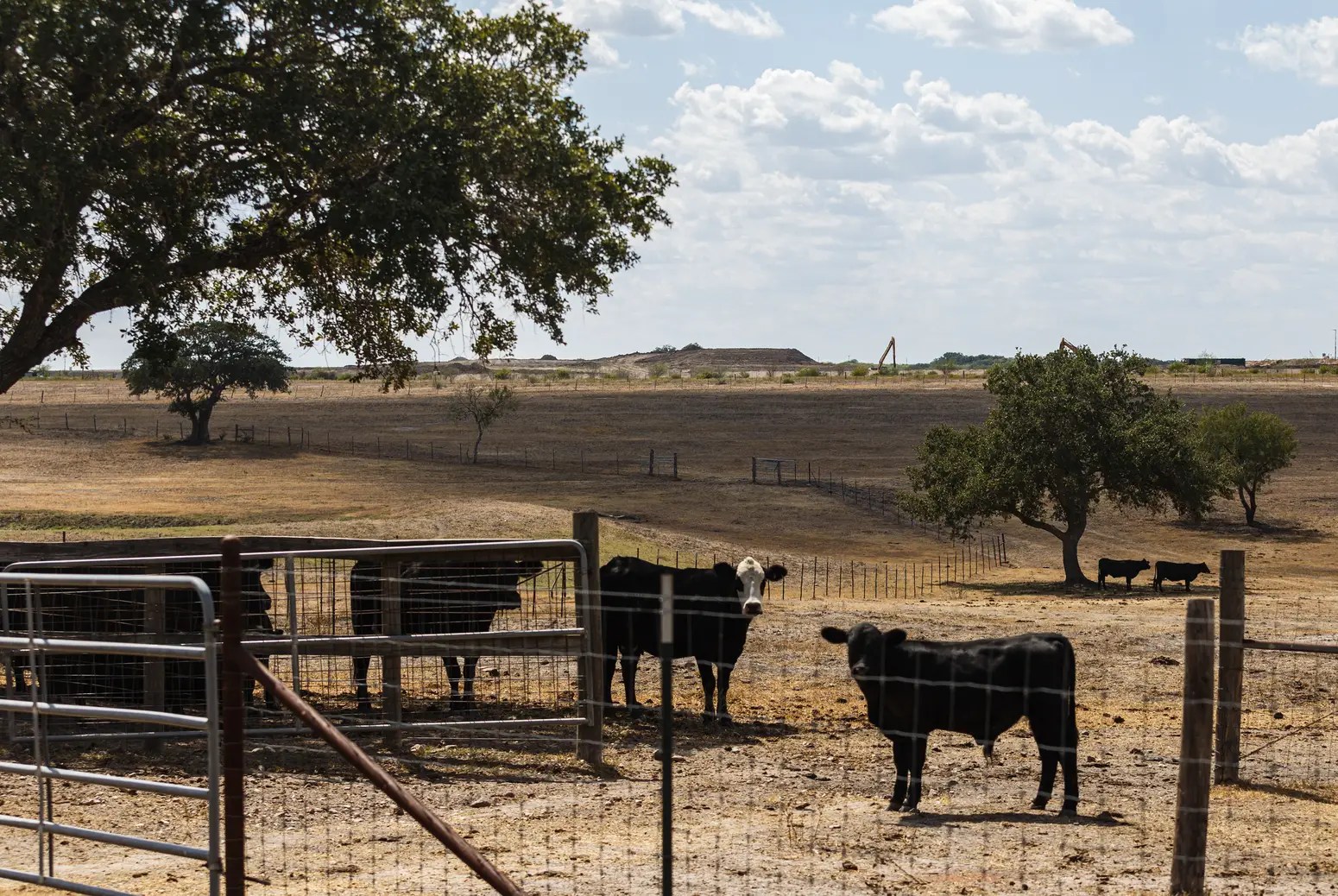
This story was first published by The Texas Tribune, a nonprofit, nonpartisan media organization that informs Texans — and engages with them — about public policy, politics, government and statewide issues.
State regulators on Monday released their draft rules for what to do with all the hazardous oilfield waste that’s left over once a well is drilled. The announcement gives the public one month to comment on the new rules — while some industry representatives started giving input more than two years ago, documents and interviews show.
Oilfield waste executives and consultants helped write the regulations beginning in 2021. Oil and gas business advocates also gave feedback to the Railroad Commission of Texas, which regulates the industry.
The effort was initiated by a commissioner who has investments in oilfield waste companies. Jim Wright, one of the agency’s three elected commissioners, ran for his seat with an eye on rewriting what’s known as Rule 8. Wright owns stock in several hazardous waste management companies in Texas, according to statements filed with the Texas Ethics Commission.
In an interview, Wright brushed off critics who suggest his involvement in the industry makes him a biased regulator. He said that he had little to do with re-writing the rules after he became commissioner, and that, if anything, his position on the Commission has hurt his businesses rather than helped it. Few companies want to risk doing business with companies associated with regulators, he said.

Julius Shieh/The Texas Tribune
“For those who think this is my rule — what Jim Wright wants — that couldn’t be further from the truth,” Wright said. “Even before I came to office, [commission] staff knew we really needed to take a hard look at Rule 8.”
Wright said he believes the new rules will benefit all Texans, not just the oilfield waste industry.
Supporters of industry’s early involvement say the rules, which haven’t been significantly revised since 1984, needed to be changed to make the permitting process more efficient and to allow new waste recycling technologies to be permitted. Critics say the revised regulations would benefit the industry over the public.
“There’s an obvious conflict of interest if the industry gets to rewrite their own rules to their own financial benefit, and they end up writing rules that make people sick or contaminate groundwater and put our collective future at risk,” said Virginia Palacios, executive director of Commission Shift, a watchdog group that advocates for stricter financial policies for commissioners.
Michael Lozano, who does communications and government affairs for the Permian Basin Petroleum Association, which provided input on the draft rules to the Commission before they were released, disagreed.
“With all due respect to our friends on the environmental NGO side, they don’t know what the field application is; they don’t understand what operators are literally doing day in and day out,” he said. “We all want robust environmental standards.”
First: Ron Pilsner stands near the cistern where he stores well water on his property near Nordheim. The land has been in his family for over a century and sits next to a recently-built oil waste facility. Last: For the past few years, a citizen’s group has been checking the water and soil quality in the area with testing kits. Julius Shieh/The Texas Tribune
In an email, Railroad Commission spokesperson Patty Ramon said soliciting very early industry input is typical for the agency’s rulemaking process. Ramon said that at least one member of the public who had protested a facility’s permit in the past was also invited to provide early feedback.
The obscure rules govern the disposal of massive amounts of waste. Companies drill thousands of wells every year in Texas. They typically pump mud into the ground as they drill; rocky soil and a salty liquid known as “produced water” then comes up along with the oil and natural gas. All that waste has to go somewhere.
That’s where Rule 8 comes in.
The Railroad Commission uses Rule 8 to decide how companies should handle that material. Unlike most hazardous waste, the toxic muck from the oilfield is exempt from federal regulations. The state regulations govern how waste can be recycled or dumped — typically in pits near the well or in commercial hazardous waste pits.
The pits can leak toxic chemicals and radioactive materials and pollute surface or groundwater if not properly managed.
In recycling, the mud can be cleaned and used for more drilling, rocks and gravel can be used to build roads and some of the less-contaminated water can be removed for other uses. However, “produced water” is most often injected back into the earth under a different permit, a method that has caused an increase in earthquakes across West Texas.
The rule change would impose new environmental standards such as restricting where waste pits can be located; allow companies to suggest new forms of oilfield waste recycling; and limit who can protest permits, which environmental groups warn could limit public input. However, Ramon wrote that filing a protest is “not a cumbersome process” and that the changes would prevent competitors from filing protests.
Texans have until 5 p.m. on Nov. 3 to give feedback on the draft changes by filling out an online form or attending a meeting at 10 a.m. Oct. 26 at the Commission’s office or 9 a.m. Oct. 27 online at adminmonitor.com/tx/rrc. There will then be another formal proposal and chance for comment later.
Residents want more protections; new rules would allow industry-created pilot programs
Throughout the state, Texans for years have tried to stop oilfield waste dumps from moving into their communities — a fight that some say is already an uphill battle.
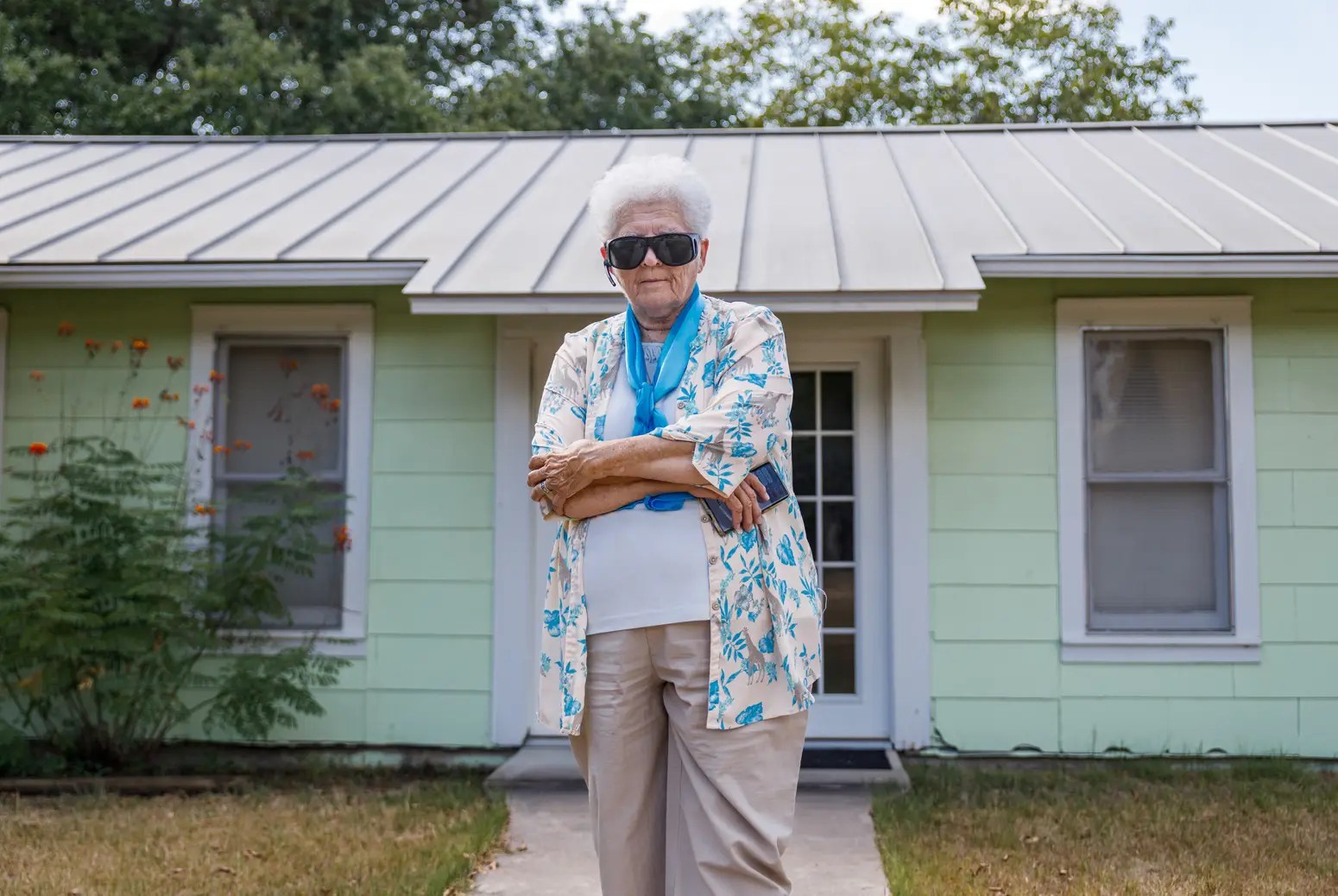
Julius Shieh/The Texas Tribune
Southeast of San Antonio, outside a tiny city called Nordheim, drivers haul waste to a commercial pit facility next to 63-year-old Ron Pilsner’s family’s farm. His father and grandfather grew up there. A ranch-style home anchors the property, surrounded by Black Angus cattle, oak trees and grassland.
Pilsner says the facility ruined their sense of peace: Bright lights shine from it at night. There’s constant beeping from vehicles backing up and often the wafting stink of petroleum, insecticides and what he describes as a smell like skunks. He no longer wants to open the windows and he worries about the waste pits’ liners leaking and contaminating the area’s groundwater.
Nordheim residents tried to stop a San Antonio-based developer from building the pits in 2014. Pilsner’s parents, Marvin and Bernice, joined the protesters, who put up “DON’T DUMP ON NORDHEIM” signs with a skull and crossbones. The couple went at least once to Austin to ask the Railroad Commission not to approve the project.
The agency approved it anyway; a lawsuit by residents seeking to overturn the decision failed.
After Petro Waste Environmental began construction and operations, the nuisance grew bad enough that Pilsner’s dad stopped renovating the farmhouse, where he planned to retire. A typically frugal man, he spent $16,000 on new furniture, Pilsner said. He moved into a nursing home before he ever got to sleep on the new mattresses. He died last year.
On a scorching, triple-digit September afternoon, Pilsner toured the waste pit’s perimeter with Sister Elizabeth Riebschlaeger, an 87-year-old Catholic nun who had family who lived in Nordheim and who supported the residents in their fight. Riebschlaeger argued the commission needed to give citizens more of a say.
“Of course we’re defeated,” Riebschlaeger said, “but we’re still making noise.”
Waste Management, which acquired Petro Waste in 2019, said it was in compliance with the current Rule 8 and did not expect to need to make any changes based on the draft rules.
The company said it did stop accepting some materials in 2021 that smell and was investing in reducing truck traffic at the facility. “At WM, safety is a core value and we are committed to being a good neighbor,” the statement said.
Under the draft rules, only people like the Pilsners who own land adjacent to a proposed waste pit or recycling facility would be notified of a company’s intent to locate its facility there.
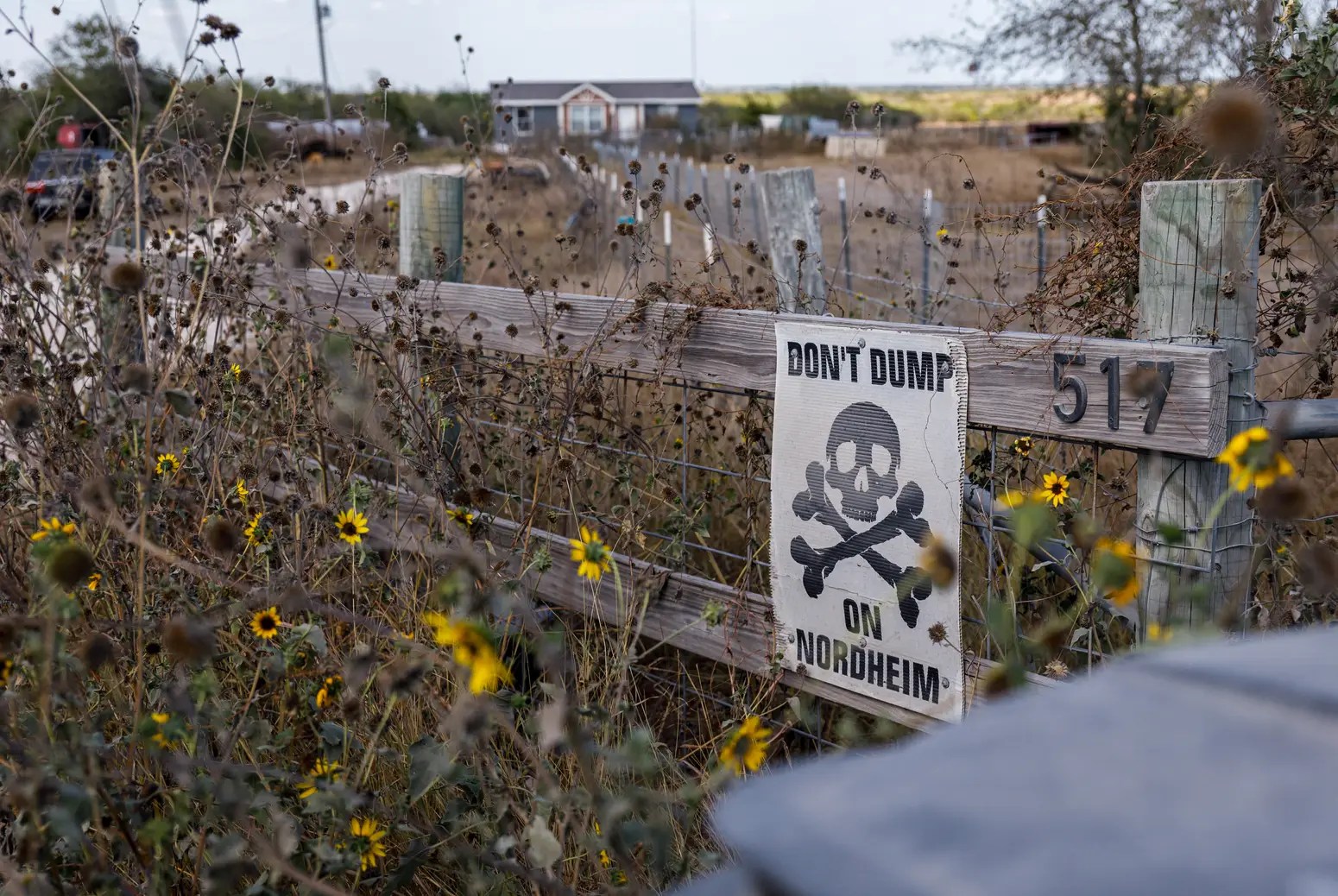
Julius Shieh/The Texas Tribune
And only people who can prove they would suffer “actual injury or economic damage” from a waste pit would be allowed to protest a new facility permit — a definition that would limit environmental groups’ influence in stopping new pits from being built. Those people would have 15 days to file a protest, from the time the company filed the application or last provided public notice, and the company would then have 30 days to either withdraw its permit application or request an administrative hearing to settle the dispute.
The draft rules also introduce an option for companies to create pilot programs for their waste: Instead of dumping it in pits or recycling it, companies could propose alternative recycling methods not covered by the rules.
The change addresses the industry’s concern that the current regulations aren’t flexible enough to include new technologies. But environmental groups worry that new methods could get a fast-track to permits with little oversight.
The new rules otherwise update existing standards, adding detail and codifying what was internal guidance used by Railroad Commission staff. For example, under current rules the pits are required to have a plan to manage stormwater runoff, including during intense rainfall events, and cannot be located in a floodplain. Under the new draft rules, such pits also can’t be located on a beach, barrier island, or within 300 feet of wetlands, rivers, streams or lakes. Nor can they be located within 500 feet of any public water system well or intake location.
The old rules said liners for waste pits must “reasonably” prevent pollution but didn’t include specific standards. The draft rules say pits must be lined with a plastic strong enough to resist damage from crude oil, salts, acids and alkaline solutions. Critics of the commission said the new liner standards aren’t much stronger than the internal guidance used by the agency.
Critics also point out that the draft rules don’t spell out the penalties when pits leak or operators violate the rules of their permit. Ramon, the commission spokesperson, said that more details on fines would be available in the formal rule proposal and would likely be similar to existing regulations.
Fines can be determined on a case-by-case basis and could be reduced if a company demonstrates “good faith;” critics say that would give companies more wiggle room to contest fines.
Industry drafts the rules
The draft rules fulfill a goal and campaign promise for Wright, a Republican from South Texas who was elected to the Railroad Commission in 2020. Wright first tried to influence the agency’s regulations years ago, when he was part of the oilfield waste services industry.
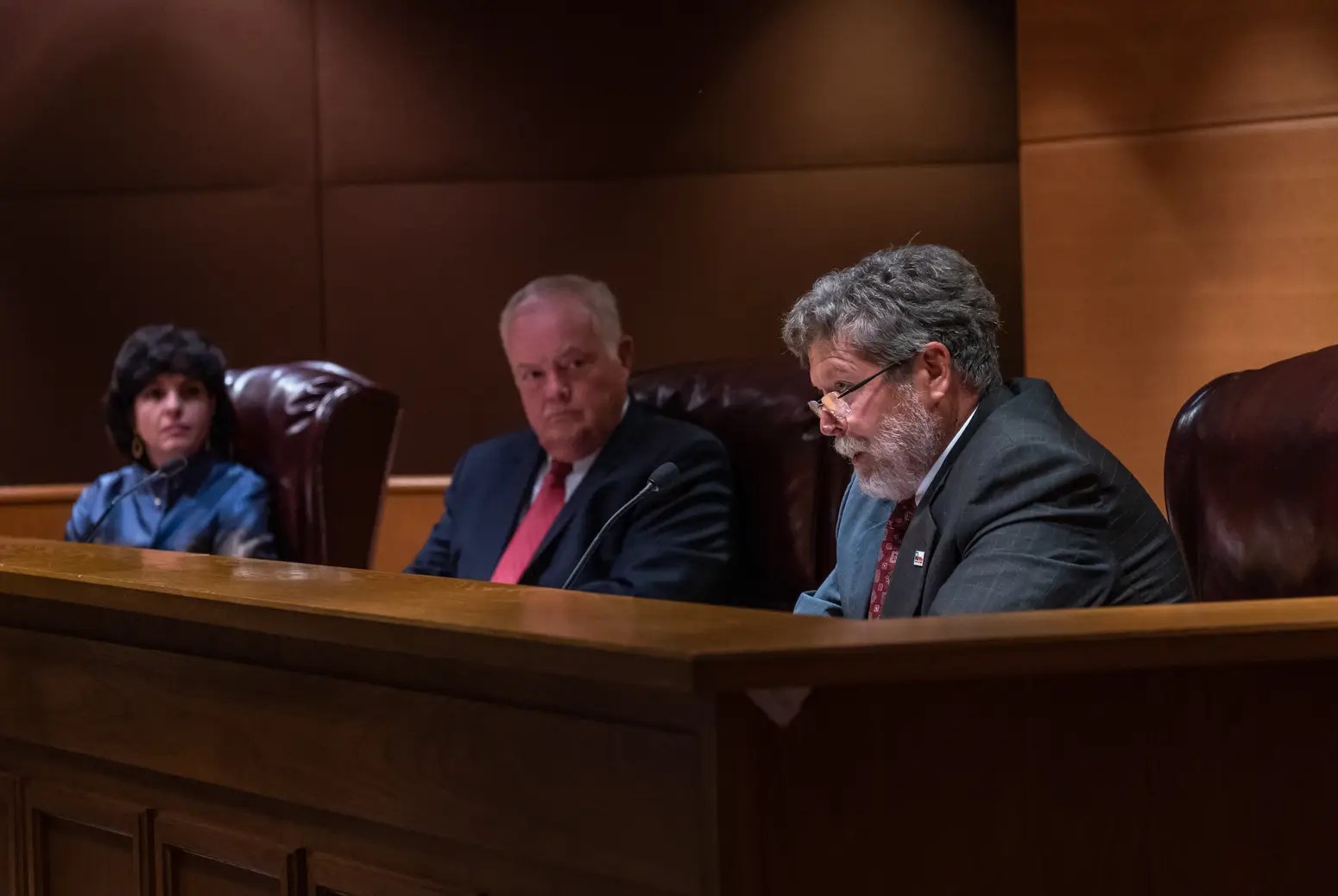
Dimitri Staszewski for The Texas Tribune
Wright was the CEO and president of a Corpus Christi company called Environmental Evolutions, which hauls hazardous waste, and has investments in other hazardous waste companies, according to state filings. Along with some of his customers, Wright wanted to help guide the commission’s staff on how to more consistently apply the regulations affecting them, he said.
At the time, one commissioner agreed to give the group access to commission staff members, according to an interview Wright did on a podcast, but none of the staff actually wanted to work with them on the rules at that time. A 2019 bill to formalize a commission-appointed oil and gas advisory group failed to pass.
So Wright decided to run for a seat on the Railroad Commission.
Wright received campaign donations from the oilfield waste industry, according to campaign finance reports. NGL Water Solutions Permian LLC, the oilfield waste division for Tulsa-based NGL Energy Partners, is one of Wright’s top donors and has given him $226,000 since 2019; a company executive gave an additional $2,500. The company has also donated to the campaigns of the other two commissioners, Christi Craddick and Wayne Christian.
In an interview, Wright said that campaign fundraising was a “necessary evil” to be in politics, but that campaign donations don’t impact his decisions on the Railroad Commission and that he makes that clear to donors.
After he defeated the better-funded incumbent Ryan Sitton in an upset, Wright’s staff turned to the waste rules, internal documents show. An investigative watchdog group called Documented obtained copies of the documents through public records requests and shared them with the Tribune.
Wright’s former director of public affairs, Kate Zaykowski, helped facilitate the formation of a regulatory task force that included at least seven people from oil and gas and oilfield waste companies, including Pioneer Natural Resources and Waste Management, Inc.
Beginning in early 2021, the task force went page-by-page through a years-old attempt to revise the rules, using it as a framework to define more clearly how permits can and can’t be approved, said Kevin Ware, an environmental engineering consultant who chaired the task force. The task force then gave its proposal to the commission.
Commission staff then invited powerful oil and gas lobbying groups to take part in an “informal review” of the task force’s recommendations. Representatives from major companies such as ExxonMobil, Apache Corp. and Chevron were invited to attend commission meetings about the rules. Those companies and at least one lobbying group sent feedback and questions.
Mark Henkhaus, a consultant and former Railroad Commission employee who chaired a regulatory committee for the Permian Basin Petroleum Association, sent an email in August 2022 to a commission staff member raising concerns that an oil waste company may have been trying to craft the rules to its benefit.
“I want to make sure that the waste handlers are not using the Commission to further their business, if you know what I mean,” Henkhaus wrote. Henkhaus declined to comment.
Aaron Krejci, Wright’s director of public affairs, said that while Wright had reactivated the task force and requested their input, he was not involved in the group’s deliberations or suggestions to agency staff.
“The task force was helpful in getting the proverbial rulemaking ball rolling,” Krejci wrote in an email. But he added, “The rule which was just released is not a product of the task force, but rather the Commission staff who have been working internally on these updates for quite some time.”
And Wright said that if the regulations were simply to benefit the waste management industry, they wouldn’t change at all — the status quo is almost always better for business.
Instead, he characterizes the draft rules as a step forward in the Railroad Commission’s ability to better regulate an industry that’s dramatically changed over the last four decades and protect water resources from pollution. He points out that the rules include new setbacks from surface water and better standards for lining waste pits.
“I think it benefits Texas, not just industry,” Wright said. “I don’t see [how this rule] was formulated for the benefit of industry at all.”
Carla Astudillo contributed to this story.
Disclosure: Exxon Mobil Corporation and Permian Basin Petroleum Association have been financial supporters of The Texas Tribune, a nonprofit, nonpartisan news organization that is funded in part by donations from members, foundations and corporate sponsors. Financial supporters play no role in the Tribune’s journalism. Find a complete list of them here.
This story was originally published by Grist with the headline In Texas, oilfield companies helped to craft new waste rules for 2 years before the public got to see them on Oct 9, 2023.

